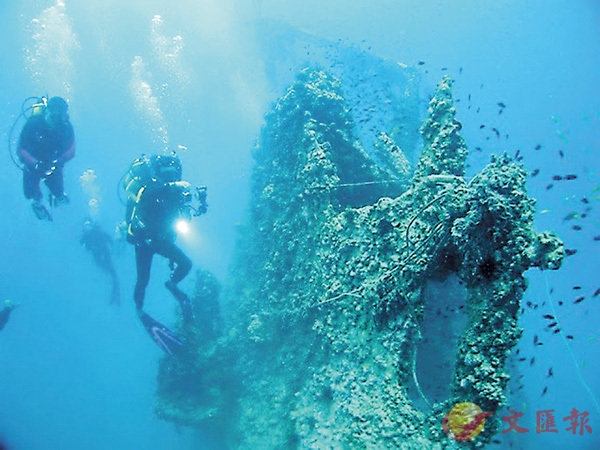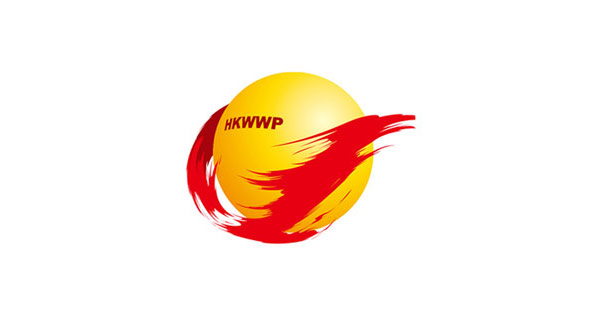 ■外國傳媒揭發爪哇海的非法打撈行為,稱之為全球最大宗盜墓案。 網上圖片
■外國傳媒揭發爪哇海的非法打撈行為,稱之為全球最大宗盜墓案。 網上圖片【原文】下文摘錄自香港《文匯報》2017年11月4日報道:
在太平洋戰爭(Pacific War)時期,很多美歐和日本軍艦(warship)在戰火中被擊沉,與艦上官兵(serviceman)埋葬海底。英國《衛報》(The Guardian)發現,這些船艦遺骸(wreckage)已淪為非法打撈者(salvager)的溫床,他們假裝成漁民,潛入海底將遺骸炸毀,掠奪貴重的金屬(metal)和鋼材(steel),有艦隻的船身六成至七成消失了,有的更遭完全破壞。報道形容,這堪稱是全球最大宗盜墓案(grave robbery)。
學者:不尊重歷史 軍人:打擾亡者
在印尼(Indonesia)、新加坡(Singapore)和馬來西亞(Malaysia)之間的爪哇海(Java Sea),二戰時是英美荷聯軍(Allied navy)與日本海軍(Imperial Japanese Navy)的戰場,數十艘戰艦和約4,500名船員長眠海底。
《衛報》去年披露,部分戰艦遭非法打撈,引起退休軍人(veteran)和歷史學者強烈不滿(uproar),認為此舉是不尊重(disrespect)歷史和打擾(disturb)死者,要求英國當局跟進並追究違法者。海軍歷史學者與潛水專家最新調查(investigation)發現,軍艦損毀情況變得愈趨嚴重,許多已面目全非(beyond recognition)。
澳洲海軍博物館(Australian National Maritime Museum)潛水專家亨特(James Hunter)表示,以往經常有潛水者偷走殘骸裡的槍械(gun)和零件(individual components),又或陣亡官兵的遺物,但近一年以來,潛水界傳出有整艘軍艦遭破壞的消息。他直言,自己從事海軍文物保育(heritage conservation)近20年,從未聽過重8,000噸的鋼製軍艦整艘消失,感到難以置信(unbelievable)。
後來,他親自潛入海底,目睹有非法打撈者把「珀斯」號(Perth)「由頭到尾劏開(rip)」。英美軍方已向印尼交涉,要求保護軍艦遺骸。打撈者一般將沉船船身當廢鐵(scrap metal)變賣,但亦可能尋找銅線(copper wire)及磷青銅(phosphor bronze)等貴重金屬。亨特質疑打撈成本昂貴,加上金屬零件早已銹蝕(corrode),打撈者應該難以回本。
荷專家:「低背景鋼」值錢
荷蘭(The Netherlands)文化遺產部門(cultural heritage agency)專家曼德斯(Martijn Manders)嘗試解釋這疑團,他認為打撈者的目標是名為「低背景鋼」(low-background steel),亦即是在1940年代原子彈(atomic bomb)爆炸(explosion)前所生產的鋼材。全球進入核年代之後,大氣(atmosphere)中的背景核輻射量(radiation)增加,因此現代生產的鋼材都受放射性元素(radioactive element)所污染。因此,核時代之前沉沒(submerged)的軍艦,成為最後一批未受污染鋼材的寶庫。「低背景鋼」是製造精密太空儀器和醫療設備的理想材料,一些遠至古羅馬時代的沉船金屬更可用於建造核電站(nuclear power station)。
曼德斯續稱,即使沉船的「低背景鋼」已出現腐蝕,仍能賣出可觀的價錢,估計一艘船就能賣近100萬英鎊(約1,027萬港元),尤其是船裡黃銅(brass)製的管道,每噸值2,000英鎊(約2.1萬港元);銅線則每噸值5,000英鎊(約5.1萬港元)。
Undersea WWII shipwrecks robbed for valuable metals
【譯文】During the Pacific War in WWII, a large number of American, European and Japanese warships were shot down by gunfire and many servicemen were buried under the sea. The Guardian recently revealed that the wreckages of the vessels had become a paradise for illegal salvagers who pretended to be fishermen, dived into the sea and destroyed the shipwrecks to look for precious metal and steel. It was discovered that certain warships were "60 to 70 per cent gone" and some were even completely destroyed, making it as the world's biggest grave robbery.
Disrespect for the dead
The Java Sea that lies between Indonesia, Singapore and Malaysia was the battlefield between the Allied naval forces and the Imperial Japanese Navy, where dozens of battleships and roughly 4,500 sailors rested at the bottom of the sea.
The Guardian disclosed last year that shipwrecks have been illegally salvaged, leading to uproar among many veterans and archaeologists, who believed these to be the acts of disrespecting history and disturbing the dead, and requested the UK authority to respond. Recent investigations by naval historians and diving experts have shown that the situation is getting worse as many of the vessels have gone beyond recognition.
James Hunter, a diving expert of the Australian National Maritime Museum, said that he had heard of salvaging of guns and individual components, or sometimes personal items of the servicemen, but the museum learnt from the diving community last year that the warships were being destroyed whole-scale. He had never heard of an 8,000-tonne steel hull being removed completely and said that such story was totally unbelievable throughout his 20-year career in the field of naval heritage conservation.
"Low-background steel" targeted
Later, diving into the Java Sea and observing through the water, Hunter saw how the salvagers had "ripped the ship Perth from one end to the other". It was said that the British and the U.S. military have negotiated with the Indonesian government requesting protection of the shipwrecks. The grave diggers often made profits by selling corroded scrap metals. They might also search for some precious treasures such as copper wiring and phosphor bronze. Hunter believed that due to the costly process of salvaging and the corrosion of the metals, it should be difficult to make the robbery profitable.
Martijn Manders, a professional of the cultural heritage agency of the Netherlands, tried to offer explanations, saying that the salvagers might target at "low-background steel", which was made before the atomic bomb explosions in 1940s. The atmosphere is filled with radiation after the world entered the nuclear age, so steel produced in modern time has been polluted by radioactive elements. But the submerged battleships, which were made before the nuclear testing era, are believed to be the last source of radiation-free steel.
Low-background steel is said to be the perfect material for making space instruments and medical equipment, some low-radiation steel from the centuries-old Roman vessels can even be used in nuclear power stations.
Manders believed that the salvagers could still make a profit although the low-background steel had been corroded. It is estimated that a ship can be sold at £1 million (approximately HK$10.27 million), in particular with the brass from pipework, which is valued at about £2,000 (HK$21,000) a tonne, and the copper wiring, roughly £5,000 a tonne (HK$51,000).■龐嘉儀
Q&A
1. 貴金屬(precious metal)通常指哪幾種金屬?
2. 貴金屬一般有何特性?
3. 其中哪種貴金屬與美元(USD)掛鈎?
4. 與貴金屬相對的是什麼金屬?
5. 承上題,這類金屬有何化學特性?
1. 黃金(gold)、銀(silver)、鉑(platinum)、鈀(palladium)等
2. 化學性質穩定、有保值能力、價格昂貴等
3. 黃金
4. 卑金屬(或稱基本金屬,base metal),即除貴金屬以外的其他所有金屬,如鐵(iron)、銅(copper)、鋁(aluminum)等
5. 容易氧化(oxidation)和腐蝕(corrosion)

